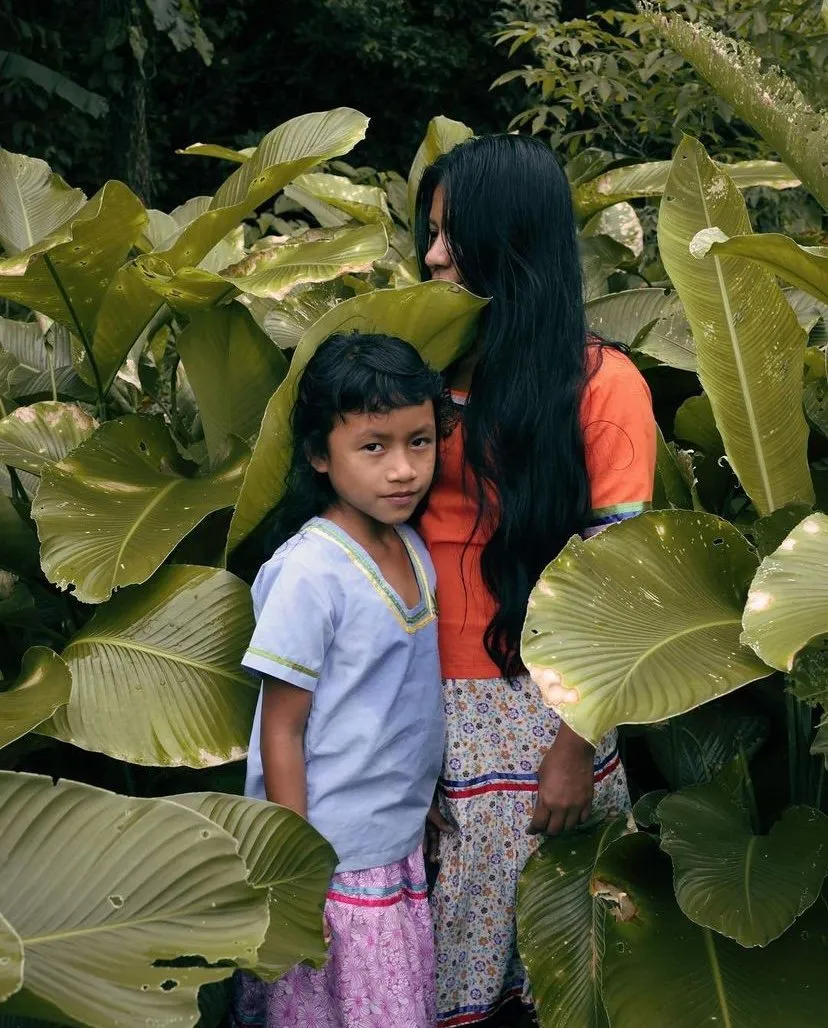
Photo by Denisse Ariana Perez
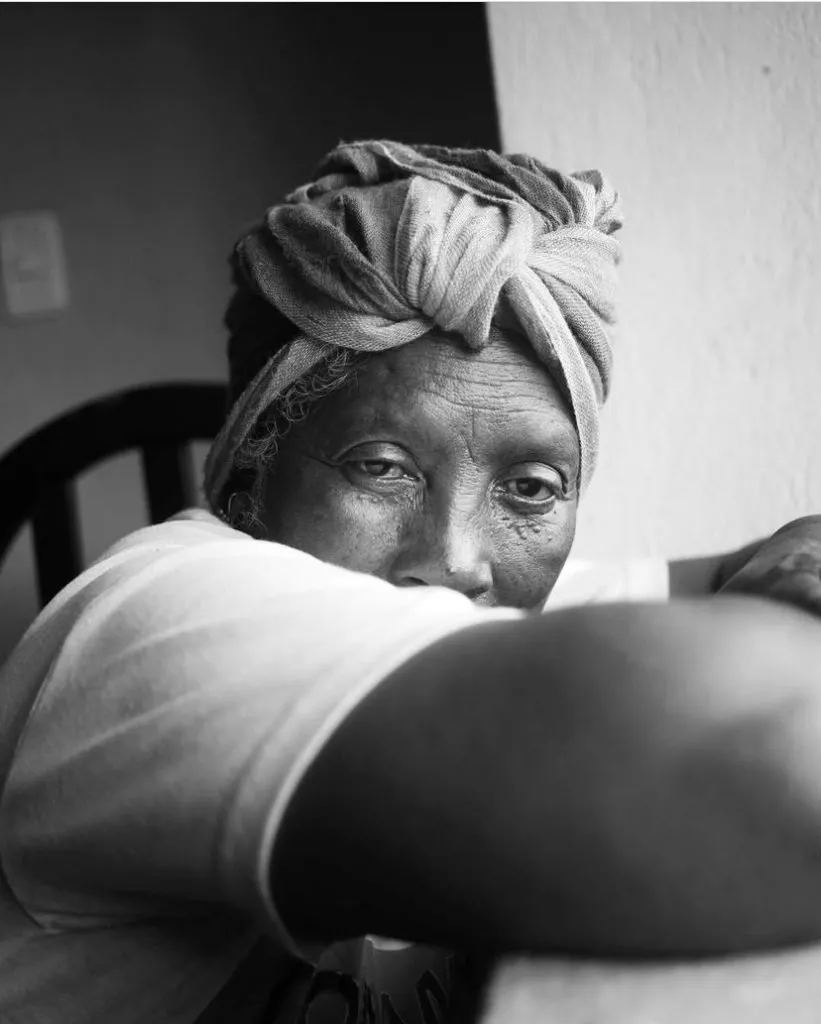
A portrait from her series on Afro-Ecuadorian women.
Our co-founder, Sara Lopez, sits down with Caribbean-born, Barcelona-based photographer, artist, and author of AGUA, Denisse Ariana Perez.
We discuss her island roots, travel, guiding forces, converging fantasy and reality, family, and the major themes of her work. Part rebellion, part dedication to her loved ones, her captures are inspiring, spirit-driven, and challenge the way we see reality.
SL: Where are you originally from?
SL: I’ve been following you for a couple of years now on Social Media, and you’ve traveled to so many different places around the world. What has that been like for you?
DP: I mean, I have had a very nomadic life. I’ve lived in very different places throughout my life. Especially the last 3, 4, 5 years I began to travel more and more and more. And the last few years, I specifically started to travel around Africa. So, I’ve been traveling around a good chunk of the world.
I had a really spiritually awakening experience in South America, in Ecuador and Peru specifically, where I shot some photos of indigenous communities and Afro-Ecuadorians.
SL: What brought you to Ecuador?
SL: We have a good friend that we met traveling and working around the Amazon in Brazil, and he claims black and indigenous ancestry. He explained how his mother is indigenous and comes from Guyana. It was the first time I met someone with ties to Guyana. And when he said Guyana, it just felt like a mystery. That part of the world was hardly discussed in my education. Whether that’s Afro-Ecuadorian communities or places like Guyana and Suriname— no one talks about them.
And everybody says it’s in Asia. I’ve never met someone who knew where Suriname actually was. Unless, of course, when I have been in the Netherlands because Suriname was a Dutch colony. If you are in Amsterdam and people are talking about Caribbean culture, people refer to Suriname. So when you go look for Caribbean food in the Netherlands, a lot of it is from there. It’s from Suriname.
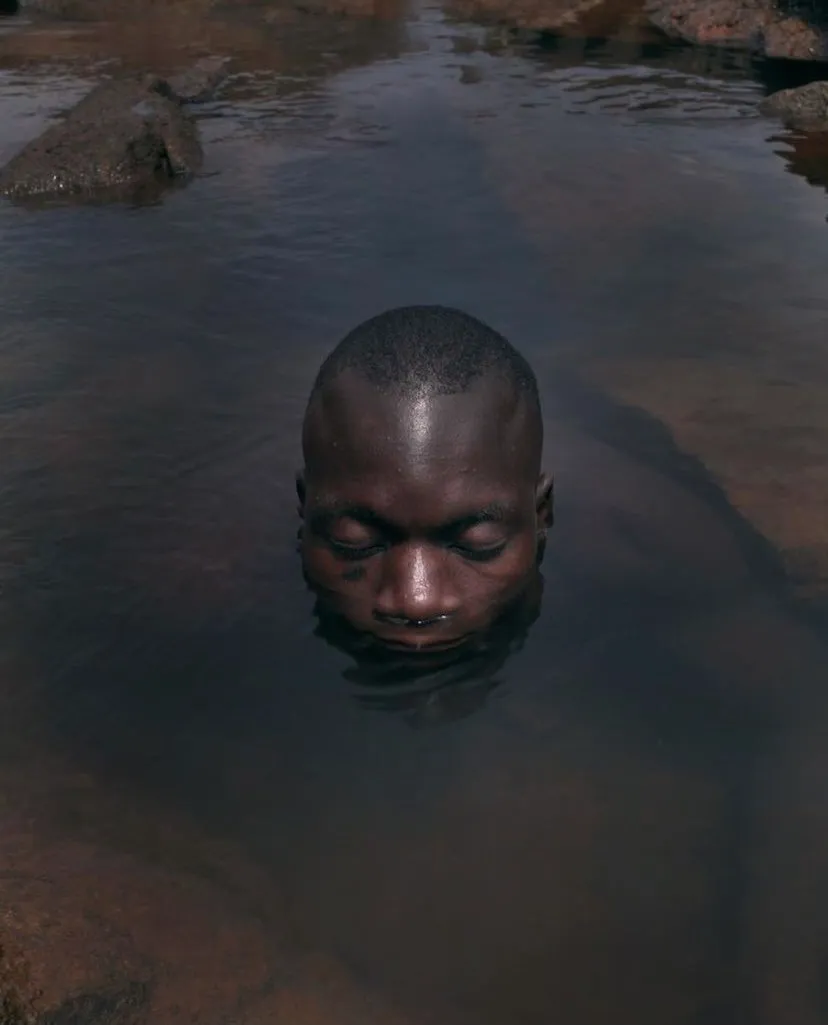
From her ongoing series “Men and Water”
SL: As you mentioned earlier, you live quite a nomadic life and travel often. How has being mixed shaped your experiences traveling?
DP: Being a mixed person allows you to experience the world in a very unique way. It allows you to be able to dip your toes in very different spaces. You never fully belong, but you are allowed in. I think people feel curious and drawn to you because you’re not the extreme, so there’s a familiarity in it. Sometimes it allows a curiosity or confusion. There have been places in my travels where people act very confused because they’ve never seen a mixed person before.
People just assume like “Oh my God, you have an advantage traveling in Africa,” also because before I was wearing an Afro. And I’m like—no. I’ve made children cry before because they were confused by my skin color, so people are looking at me like, “what happened to you?”
Another example is that I’ve never been so reminded of how I looked like I was in South Africa. Everything is categorized by the way you look. I’ve never had to wake up every day and have to be reminded of the fact that I’m another color.
Subscribe To Our Newsletter
Subscribe for exclusive insights, upcoming panels, inspiring stories, and opportunities to support communities driving real change.
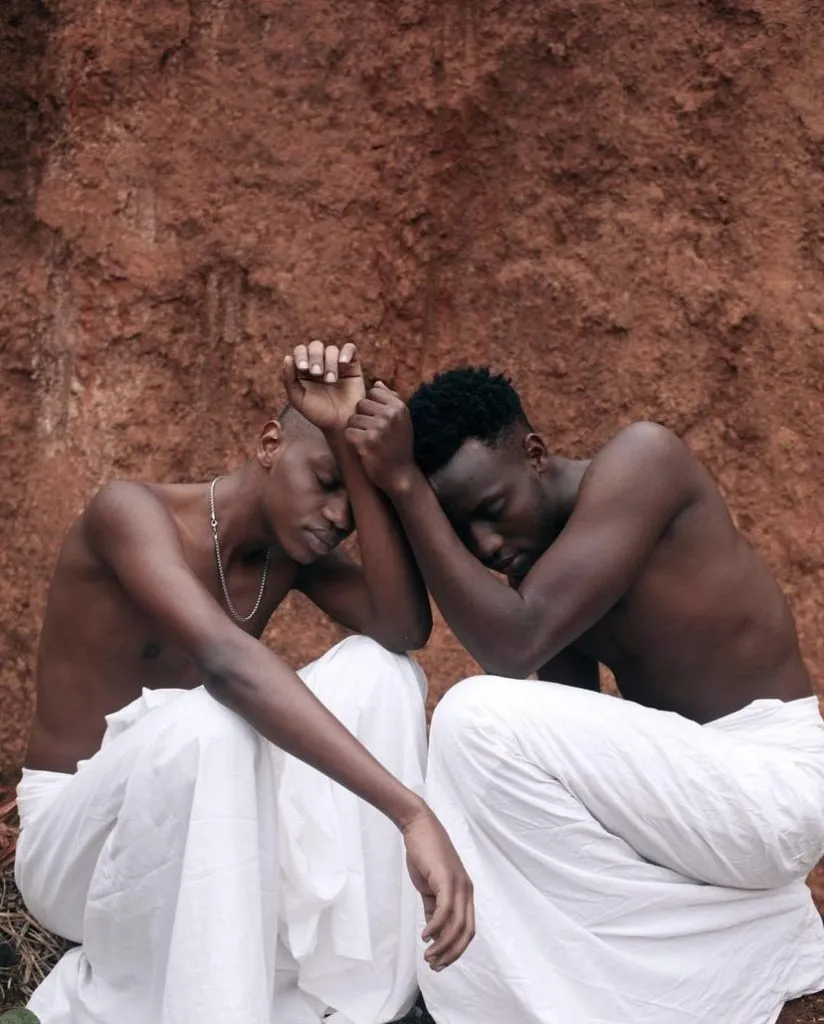
From her series “Q&A – Q for Queer, A for Africa” A visual celebration of LGBTQI+ people throughout Africa.
SL: I feel like it’s still very much like that in America.
People just assume like “Oh my God, you have an advantage traveling in Africa,” also because before I was wearing an Afro. And I’m like—no. I’ve made children cry before because they were confused by my skin color, so people are looking at me like, “what happened to you?”
Another example is that I’ve never been so reminded of how I looked like I was in South Africa. Everything is categorized by the way you look. I’ve never had to wake up every day and have to be reminded of the fact that I’m another color.
SL: I’ve theorized that the States will transform into a class-dominated society. Is this something you can see happening as well?
Culturally, I can see distances in terms of values within me, and when I come back to the States, I feel that chasm. As a mixed person, you don’t connect with the concept of boxes.
People just assume like “Oh my God, you have an advantage traveling in Africa,” also because before I was wearing an Afro. And I’m like—no. I’ve made children cry before because they were confused by my skin color, so people are looking at me like, “what happened to you?”
Another example is that I’ve never been so reminded of how I looked like I was in South Africa. Everything is categorized by the way you look. I’ve never had to wake up every day and have to be reminded of the fact that I’m another color.
SL: How was it growing up in the Dominican Republic? (in terms of identity and race?)
I felt clearly a lack of belonging, and I knew I had to leave. I came back to visit, but I haven’t lived there since I was 17. I felt very out of place.
In school, there is a pride of “multi-combinations” of things, but there is no pride in the African part of the heritage. They are proud of being mixed people and indigenous and, even though the indigenous culture did not survive in the Caribbean, there is that pride… of course, the Spanish blood as well. The African side has never been embraced. It was usually reserved for Haitian people. We were sort of taught they are “real.” They are “black.”
SL: Did you ever think about your ancestral roots growing up?
I think going to the west (Africa), I could trace back some messages of Caribbean culture. I could see it in the music and the food. There were some things energetically, but not everywhere. Some places surprised me. If there was no clear root or connection in a place, energetically, I still felt connected. And I’ve felt connected to places I didn’t expect to feel connected to, in the world. I don’t think we are limited to the genetic lineage, you know. I have felt different connections in different places…
(on Africa) I just knew I wanted to see it and feel it, and afterward, it was clear that I didn’t want to keep on telling negative stories about it. I wanted to highlight beauty. I made a very conscious decision. When I was first traveling, I did take pictures of many things there. But there was a moment a couple of years ago where I stopped and realized I just wanted to highlight beauty. I’m not going to take pictures of anything that resembled scarcity, I would avoid it. I had this thought “Look for beauty all the time.” Just thinking, “How can I portray this person in the most dignified way possible?”
When people talk about documentary photography, I don’t do that— not traditionally. I’m not capturing reality. I’m adding fantasy to reality. It’s like a mental exercise to imagine what is in front of you. I wanted to add a little bit of elevation. It came very intuitively for me.
Shop Our Sustainable Merch
Made for explorers advocates, and dreamers.
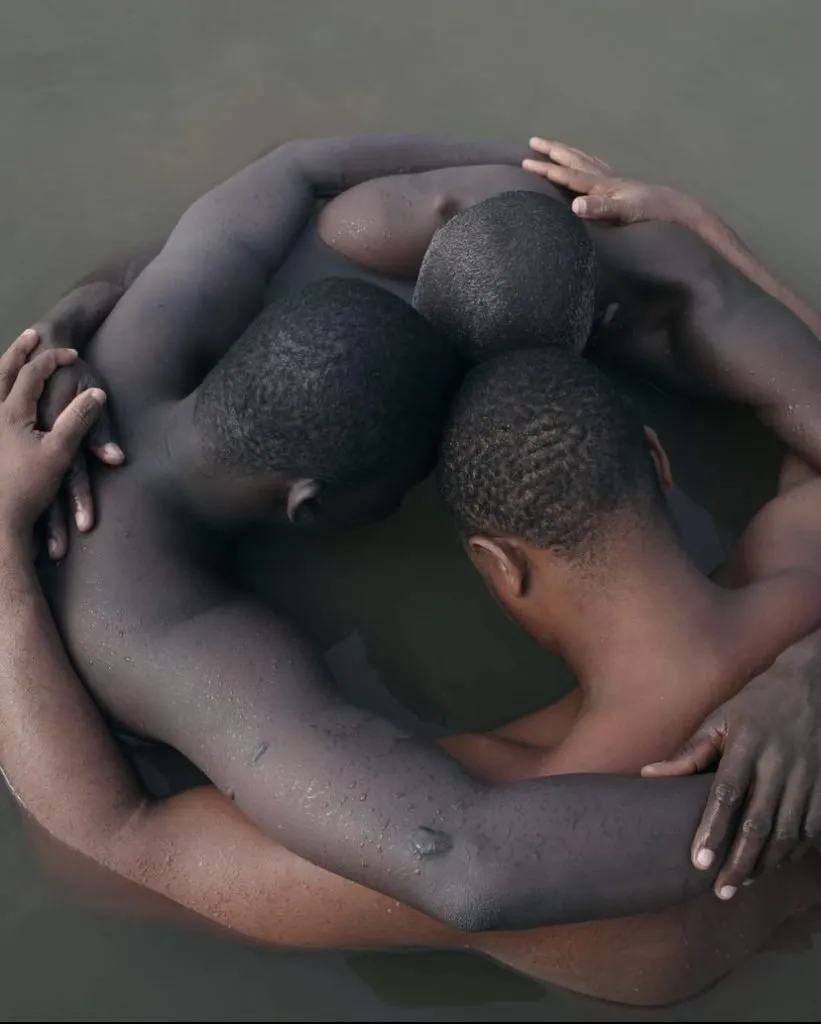
From her ongoing series “Men and Water”

From her series “Men and Cocks”
SL: It sounds like your journey with photography has also been a journey of healing for yourself.
I think there was a childlike amusement to see Cuba. Despite being so close, it is so different to some key things I couldn’t identify or connect with in the DR. Things like classism, the sense that education is not determined by how much money you have, and in terms of race. I remember going around Cuba, and I was in awe about seeing someone that looked like the color of my (black) jumpsuit and speaking Spanish, singing Cuban songs, and singing songs that my father raised me with, songs I hadn’t heard in 15 years. There was a lot of nostalgia. Also, seeing women with curly hair and with their afros. I was just in awe of the women. Seeing all these shades and sort of like rainbow of skin tones, women wearing their hair naturally. I always wish I could, but I never knew how I could, and I think without me knowing, I was very drawn to the beauty of black skin, in black skin. I was never allowed to, but I think I always was. I always felt the beauty in my brothers and my dad. I allowed that gut feeling to take me. I went to Africa with that gut feeling and getting closer and closer to the skin and the body— and sort of paying homage to it. The more I did that, the more I felt pride in those parts of my roots. The more beauty I found in them, the more beauty I found in me. I felt very proud to trace the lines in my face, understand my body and why it looks this way.
I think the last element that would happen is that I let my hair go natural. And I had no one to teach me. I had to learn from YouTube. I didn’t grow up with that. That usually comes from the maternal side, and I probably would not have been allowed to go to school if my hair was curly.
SL: What do you hope to achieve or inspire through your work?
SL: When I think of your work in Turkey and Africa, I definitely see that, there’s a focus on the male subject, whether that’s through your series “Men and Cocks”, “Men and Water”…
SL: I feel like that portraying man in his vulnerability— it’s so healing, not just for them but for the observer, to be able to witness a man surrender into these softer parts of himself, visually speaking.
And for me, when I’m shooting, I don’t think, oh I’m shooting a man, or oh I’m shooting a woman, it’s just a person. And depending on the person, different things will come out. More and more, its become a ritual, of how to turn the photographic process into a cathartic experience or a space where energy can be shared and released. That’s when it becomes more interesting.